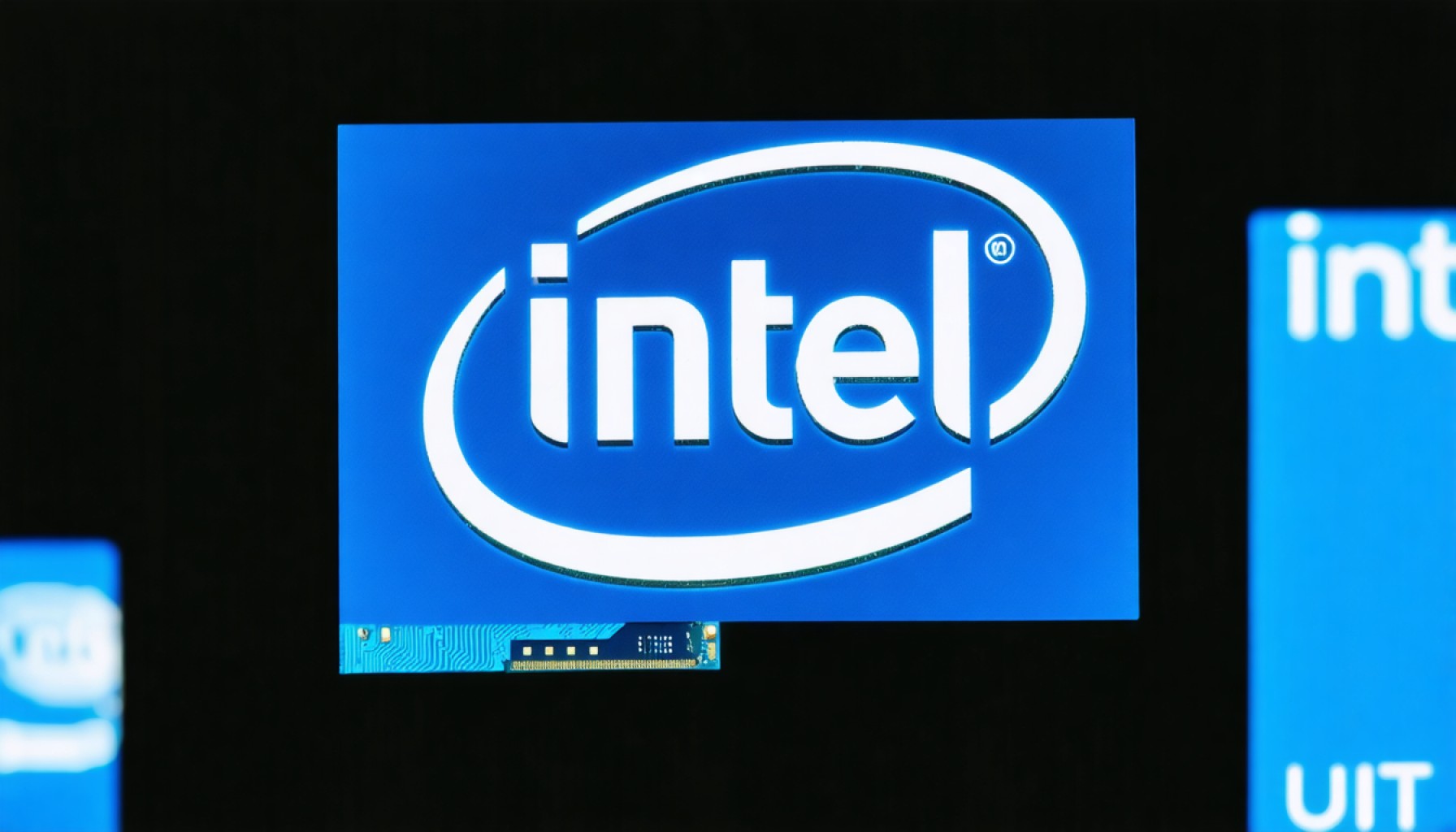- Intel faces declining market share, projected to drop from 82.5% in 2016 to 58.2% by 2025, amid rising competition from AMD and others.
- The company’s struggle is tied to technological erosion, manufacturing delays, and missed opportunities in mobile and AI sectors.
- Lip-Bu Tan, Intel’s new CEO, aims for recovery through innovation and strategic divestments, without selling foundries.
- Upcoming product launches, including Panther Lake CPUs and Granite Rapids Xeon 6 processors, are key to Intel’s comeback strategy.
- Challenges include potential mass layoffs and geopolitical factors like tariffs and export restrictions, emphasizing the need for urgent action.
- Intel’s story highlights the risks of complacency in a rapidly evolving tech landscape, as it seeks to recapture its past dominance.
Once a titan of the semiconductor world, Intel stands at a crossroads, grappling with diminishing market share and intensifying competition. The company’s journey, juxtaposed against meteoric gains by its rivals, tells a cautionary tale of missed opportunities and strategic blunders.
For decades, Intel basked in the glow of market dominance, its x86 CPUs forming the backbone of countless PCs and servers. Yet, like an aging lion in a changing savanna, its hold has weakened dramatically. By the end of 2025, Intel’s market share is projected to sink from a commanding 82.5% in 2016 to a mere 58.2%. In stark contrast, Advanced Micro Devices (AMD) has surged, claiming 40.3% of the market by capitalizing on agility and visionary leadership.
At the heart of Intel’s struggle lies its ongoing battle with technological erosion. As competitors like AMD deftly leverage state-of-the-art production capabilities from Taiwan Semiconductor Manufacturing Co. (TSMC), Intel has been encumbered by manufacturing delays and costly strategic pivots. Its attempts to broaden its horizons with mobile and AI chips—currently dominated by Arm Holdings and Nvidia, respectively—have largely fallen flat.
Under the new stewardship of Lip-Bu Tan, Intel faces the daunting task of reversing its fortunes. Tan, a recent appointment as CEO, is tasked with spearheading an ambitious revitalization effort. eschewing the notion of selling off its foundries or devolving into a fabless entity. Instead, he envisions a future where Intel regains its prowess through innovative engineering and strategic divestments, including shedding non-core assets like the programmable chipmaker Altera.
As Intel charts a course toward recovery, it has initiated plans to aggressively debut cutting-edge products. By late 2025, the company aims to launch its eagerly anticipated Panther Lake CPUs, alongside the Granite Rapids Xeon 6 processors, poised to fortify its server market standing. However, the looming specter of mass layoffs—rumored to affect nearly a fifth of its workforce—casts a shadow over these endeavors.
The broader geopolitical landscape, punctuated by tariffs, export restrictions, and subsidy negotiations, further complicates Intel’s path. Nonetheless, these external pressures underscore the urgency with which Intel must act to reclaim lost ground.
In this age of relentless technological evolution, where nimble competitors continually upend expectations, Intel’s narrative serves as a poignant reminder of the pitfalls of complacency. As Lip-Bu Tan navigates this formidable landscape, the world watches, wondering if this storied giant can reclaim its former glory or if the future belongs to those who once lived in its shadow.
Intel’s Comeback Challenge: Can the Tech Giant Reclaim Its Crown?
Intel’s story is one of a legendary company that once ruled the semiconductor industry but is now under immense pressure to reinvent itself. With rising competitors like AMD and changing market dynamics, Intel is at a pivotal point. Let’s dive into the key factors influencing Intel’s future and what it means for the tech industry.
The Rise and Fall of Intel’s Market Share
In the past decade, Intel’s dominance in the semiconductor market has significantly waned. The company’s market share, which stood at an impressive 82.5% in 2016, is projected to fall to 58.2% by 2025, while AMD continues to capitalize on agility and performance, reaching 40.3% market share. This shift underscores a broader trend of increased competition and innovation within the sector.
Technological Erosion and Manufacturing Delays
One of Intel’s significant challenges has been keeping up with competitors like AMD and NVIDIA, who have been quick to leverage advanced manufacturing technologies from companies like TSMC. Intel’s manufacturing delays and strategic missteps have exposed gaps that rivals have exploited. The company’s efforts to enter mobile and AI chips have not met the desired success, partly because of mature competitors like Arm Holdings and NVIDIA already entrenched in these markets.
Continuous Innovation and Strategic Focus
Under the new leadership of CEO Lip-Bu Tan, Intel is focusing on rejuvenating its product lineup. The anticipated launch of Panther Lake CPUs and Granite Rapids Xeon 6 processors by late 2025 aims to reclaim lost market share, especially in the server domain. These products promise significant improvements in performance and efficiency, which could help Intel regain its competitive edge.
Real-World Use Cases for Intel’s New Lineup
1. Data Centers: The upcoming Xeon processors are designed to improve server performance, which is crucial for the growing needs of data centers. This could support cloud-based services and high-performance computing applications.
2. AI and Machine Learning: With enhanced processing power, Intel’s new processors can handle complex AI algorithms more efficiently, making them suitable for industries that rely heavily on AI, like healthcare and automotive.
Geopolitical and Economic Factors
The semiconductor industry is not only influenced by technological advancements but also by geopolitical factors like tariffs and export restrictions. Intel’s ability to navigate these challenges will be crucial in maintaining supply chains and accessing global markets.
Market Forecast and Industry Trends
The global semiconductor market is expected to continue growing, driven by demand in AI, 5G, IoT, and automotive sectors. Intel’s ability to innovate in these areas will be crucial for capturing new market opportunities. According to market reports, the semiconductor industry is projected to grow at a compound annual growth rate (CAGR) of 6% over the next five years.
Pros and Cons of Intel’s Strategic Moves
Pros:
– Potential for innovation with new processor launches.
– Strong brand recognition and existing customer base.
– Leadership under Lip-Bu Tan could streamline decision-making.
Cons:
– Manufacturing delays may continue to hinder progress.
– Workforce reduction could affect morale and productivity.
– Ongoing competition from agile rivals like AMD and NVIDIA.
Actionable Tips for Tech Enthusiasts and Investors
– Stay Informed: Keep an eye on Intel’s product launches and performance benchmarks, which could indicate market direction.
– Diversify Investments: Consider investing in both established players like Intel and emerging firms in the semiconductor space to balance risk.
– Explore AI Applications: Industries leveraging Intel’s advancements in AI could present new opportunities for investment and innovation.
For further information on Intel’s corporate strategy and market offerings, visit Intel’s official website.
Intel stands at a crucial junction in its storied history. As it attempts to reclaim its dominance, the broader tech world watches closely, eager to see if this legendary firm can adapt to the ever-evolving challenges of the semiconductor landscape.







